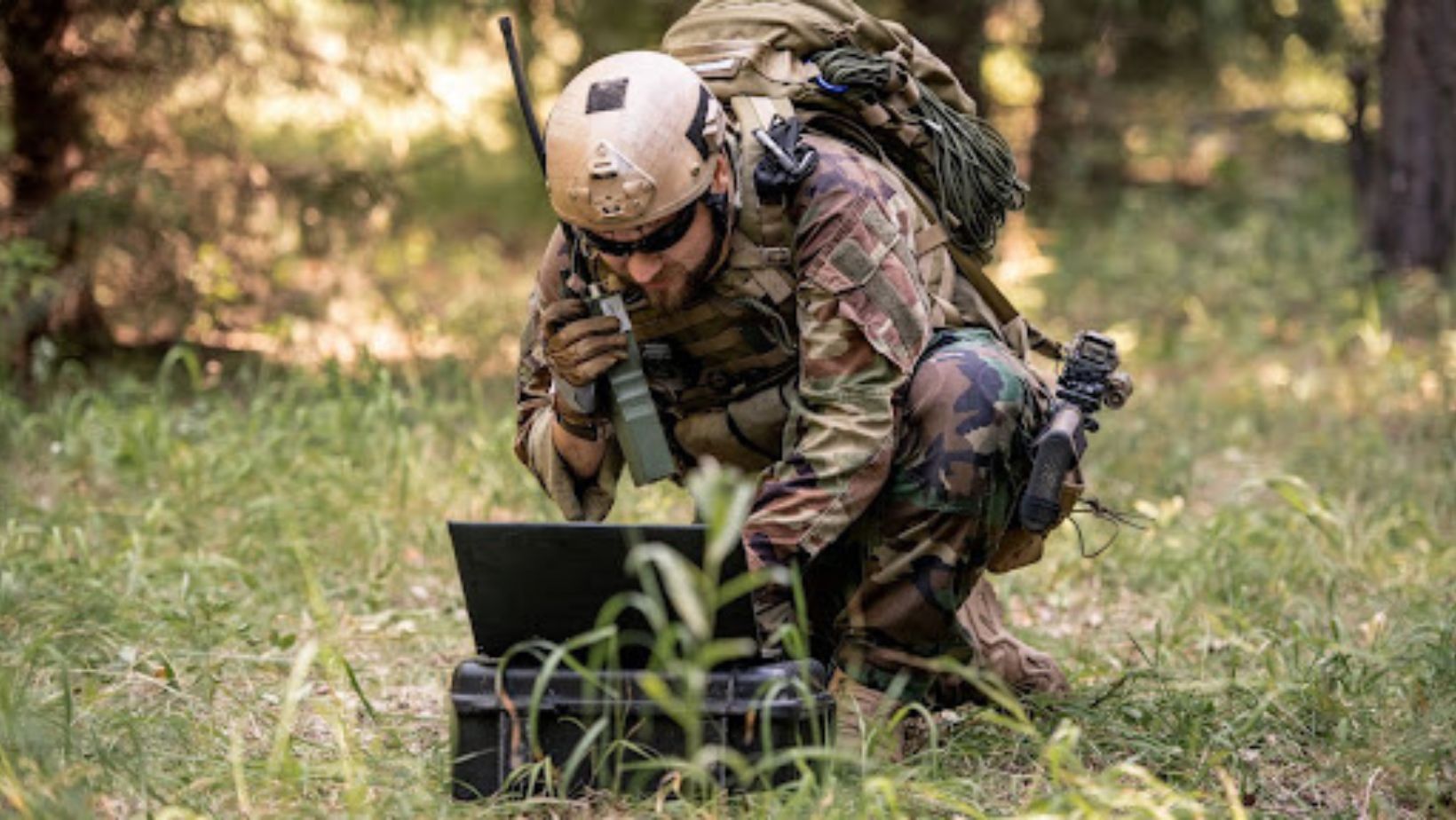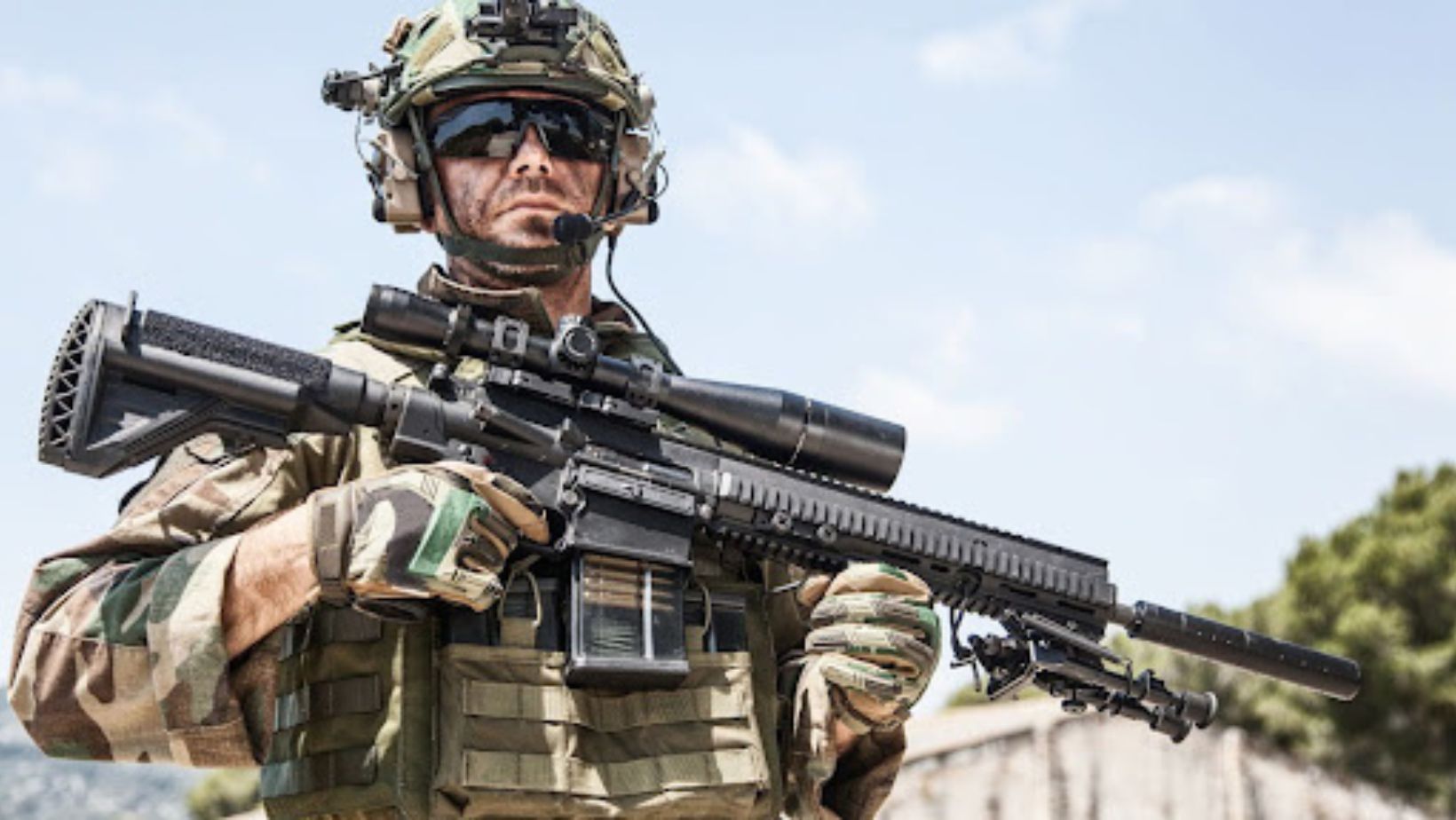As the saying goes, forewarned is forearmed. Understanding the new developments in military technology is essential. These include the emergence of artificial intelligence, which presents both ethical and practical challenges, as well as the growing Internet of Military Things, which brings together disparate technologies and devices to enable more efficient warfare.
Unmanned systems and robotics are becoming key players in logistics and reconnaissance, while virtual and augmented reality are revolutionizing training methods. And in our digital era, cyber warfare strategies are indispensable for defense.
With these advancements, the face of military operations is evolving – won’t you join the discussion and explore the future?
Table of Contents
Toggle1. Artificial Intelligence
Undoubtedly, artificial intelligence (AI) is fast becoming a crucial component in modern military technology despite the significant hurdles and ethical issues it presents.
You can’t ignore AI’s potential to revolutionize military operations, from data analysis to strategic decision-making. It’s not just about automating tasks; it’s about empowering military personnel to make informed decisions at lightning speed.
Imagine a world where AI can sift through mountains of data, spot patterns, and deliver insights that might take human analysts weeks to uncover. Or consider the possibilities of AI-driven predictive maintenance, where machine learning algorithms analyze equipment data to predict failures before they happen, saving time, money, and potentially lives.
2. Robotics & Autonomous Systems (RAS)
Building on the advancements in AI, robotics & autonomous systems are dramatically reshaping how military operations are conducted. These technologies present a paradigm shift in the way wars are fought, offering numerous advantages that could redefine conflict scenarios.
- Enhanced capabilities: RAS can perform tasks beyond human abilities, such as defusing bombs, completing reconnaissance missions, and navigating difficult terrains. They can be deployed in hazardous situations, reducing human risk.
- Increased efficiency: With AI integration, these systems can make autonomous decisions, enhancing military efficiency. They can process massive amounts of data faster than humans, providing critical insights in real-time.
- Cost-effective: RAS can significantly cut down on military costs. They streamline operations, reduce manpower needs, and improve logistics, making them a cost-effective solution.
3. Hypersonic Systems
Imagine a missile that exceeds supersonic speeds, presenting an almost impenetrable defense. This isn’t just a future concept; it’s a reality taking shape.
Hypersonic missiles are being developed to improve military effectiveness and responsiveness, offering a strategic advantage in the theater of war.
But how do hypersonic systems work?

To reach their amazing speeds, they combine sophisticated propulsion systems with aerodynamic designs. Not only do these systems provide faster missiles, but they also improve accuracy and maneuverability. They can strike targets quickly and precisely because of this, making them a powerful force in combat.
4. Advanced Defense Equipment
Moving from the realm of hypersonic systems, let’s shift our focus to another groundbreaking area: advanced defense equipment. These innovations are shaping the future of military technology, offering enhanced capabilities and improved operational efficiency.
- Unmanned systems: Drones in the air are examples of unmanned systems that are growing in sophistication. These systems are now capable of performing a wide range of jobs, from combat missions to logistical support. They are no longer only for reconnaissance. With longer operating times and better communication capabilities, they are becoming more robust.
- Virtual and augmented reality: VR and AR technologies are revolutionizing military training. These immersive technologies offer realistic simulations that improve military readiness, from navigation skills to battlefield scenarios. Furthermore, they help reduce costs by eliminating the need for physical resources.
5. Additive Manufacturing (3D Printing)
Upon exploring the field of additive manufacturing, also known as 3D printing, it is evident how this technology is transforming the military industry.
Its capacity to create parts, tools, and assets quickly and on-demand gives it a major advantage in terms of logistics and maintenance capabilities. With the help of this cutting-edge technique, you can construct intricate parts layer by layer out of a variety of materials, including composite, metal, and plastic. This significantly cuts down on the time and expense involved with traditional manufacturing methods and allows you to produce goods anywhere, at any time.
This technology isn’t just about cost and time efficiency.
Think about it: the ability to print equipment right on the battlefield could be a game-changer. If a vehicle part breaks, instead of waiting for a replacement to arrive, you could just print it on-site. This not only speeds up the repair process but also reduces the reliance on long supply chains, enhancing operational readiness and resilience.
6. Cyber-Warfare
While 3D printing is revolutionizing the physical aspects of warfare, it’s equally crucial to consider the growing importance of cyber warfare, a less tangible but equally potent battlefield where nations vie for control and dominance.
In this rapidly evolving domain, the strength of a nation’s defenses isn’t measured in tanks or soldiers, but in the robustness of its firewalls and the sophistication of its encryption algorithms.
- Offensive cyber operations: To stay ahead, you’re not just defending your systems but also probing and exploiting weaknesses in adversaries’ networks. Such actions can serve various strategic purposes, from espionage to infrastructure sabotage. As nations continue to leverage these tactics, the line between conventional and cyber warfare blurs.
- Protective measures: The strength of a safe digital castle depends on its weakest component. As a result, countries make large investments in system security, protecting sensitive data from possible breaches, and guaranteeing quick recovery in the case of an attack.
- Artificial intelligence in cyber warfare: AI plays a crucial role in automating the detection and response to cyber threats. The sheer volume of data involved in monitoring network activity necessitates machine-learning algorithms that can identify patterns and anomalies faster than any human could.
What About Reloading Powder?
Reloading powder, also known as gunpowder or propellant, is not typically considered a “military technology trend” in the same sense as advancements in weapons systems, communication technologies, or defense strategies.

However, improvements in reloading powder formulation, efficiency, and safety can certainly impact military operations by enhancing the performance and reliability of firearms and ammunition.
Conclusion
As you stand at the forefront of defense innovation, these six trends are redefining your battlefield. AI, RAS, hypersonic systems, advanced equipment, 3D printing, and cyber-warfare aren’t just theories; they’re the tangible future of military tech.
They promise unprecedented efficiency, but they also pose new ethical challenges. This revolution won’t be easy, but by staying informed and adaptive, you’ll navigate this evolving landscape, shaping the future of defense strategies amidst technological change.






